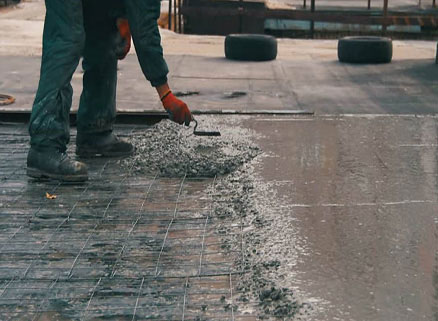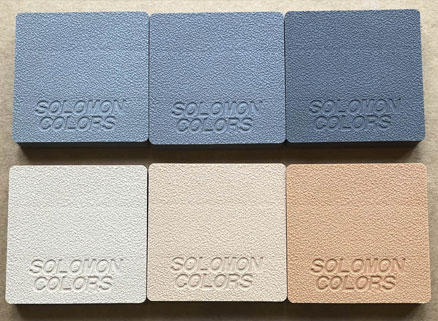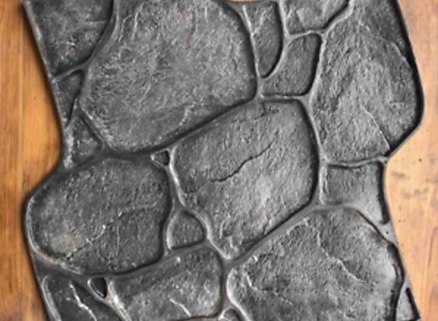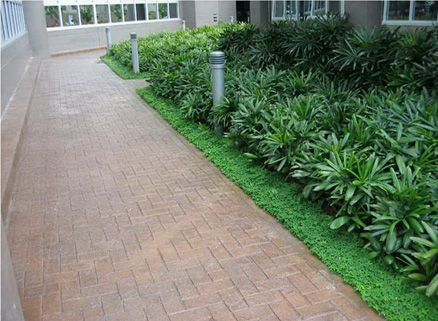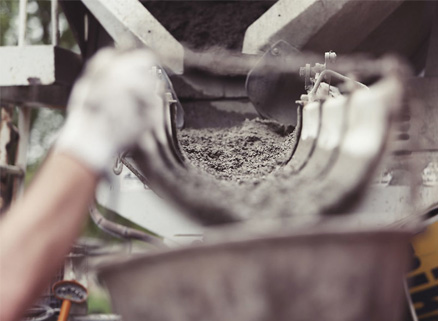Method of implementation
1. Levels and survey works shall be raised to determine the course of the runoff as required by the site.
2. Cutting the land or the area to be poured into regular blocks so that concrete can be poured in batches.
3. Making wood or iron frames according to the approved engineering work plan and decoration.
4. Equipping the floors with a layer of polyethylene, thickness of 400 microns, and placing the iron grating and connecting it with metal wires and fixing it on a concrete biscuit or a metal chair 5 cm above the ground.
5. Preparing approved coloring materials and rubber molds in accordance with the engineering drawings to be implemented.
6. Pour the concrete floors with the required thicknesses, taking into account the control joints according to the structural designs.
7. Spraying the colored and hardener powder and spreading it before the concrete dries up in two stages at a rate of 4 kg / m2, with smoothing and flushing the trowel and smoothing the colored surface before the concrete reaches the degree of dryness.
8. Sprinkle with a thin layer of anti-aging and anti-sticking color, bearing in mind that the concrete must remain soft.
9. Installing the rubber dies with the required designs and starting the sealing process.
10. After two days of sealing, the concrete floors are cleaned of anti-stick powder with a soft broom and then washed with water to remove the remaining dust and show the true color of the sealed concrete.
11. After the concrete surfaces dry, they are coated with a layer of super sealer, the main factor in protecting its surface.

 English
English
 عربي
عربي
